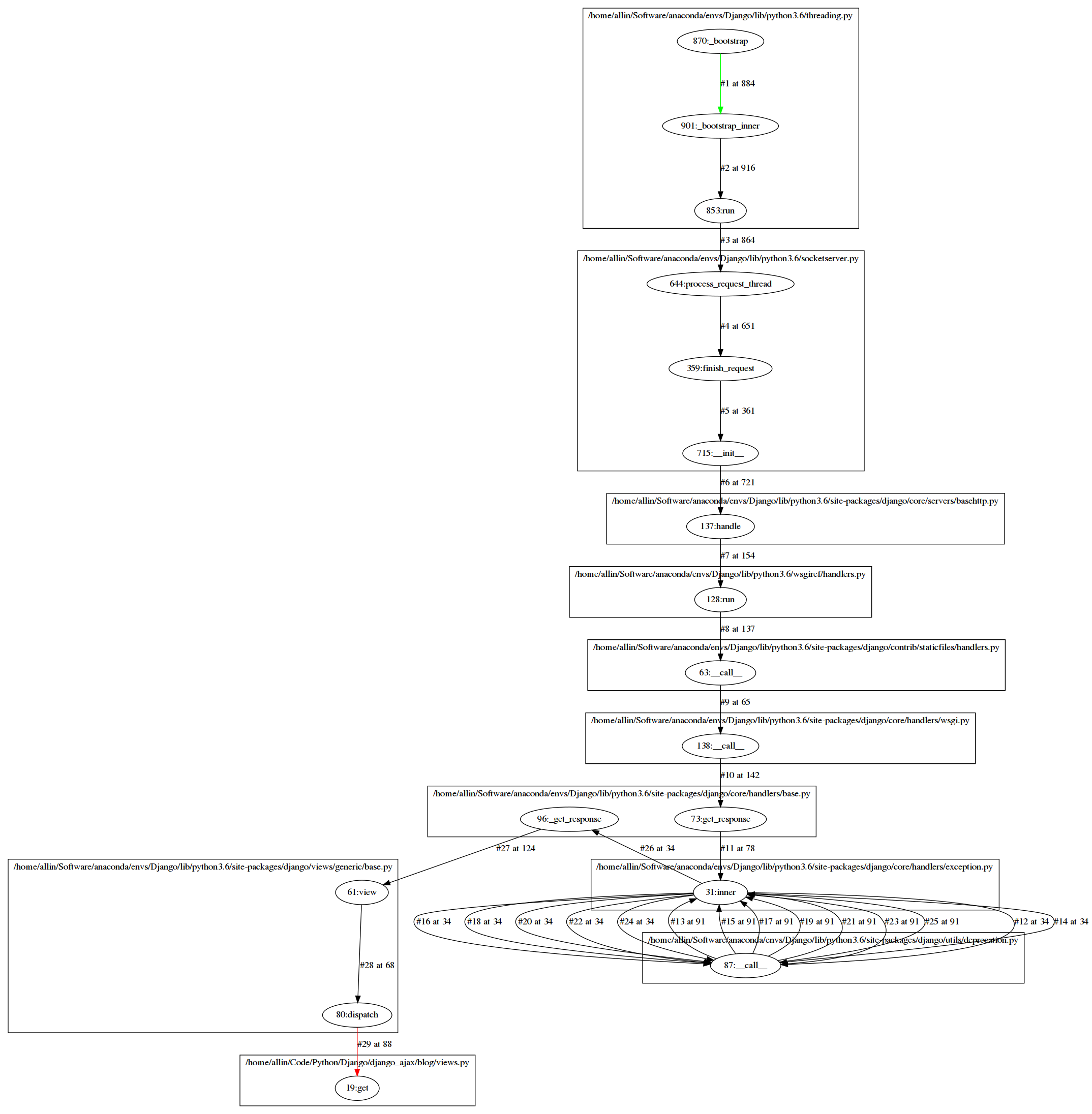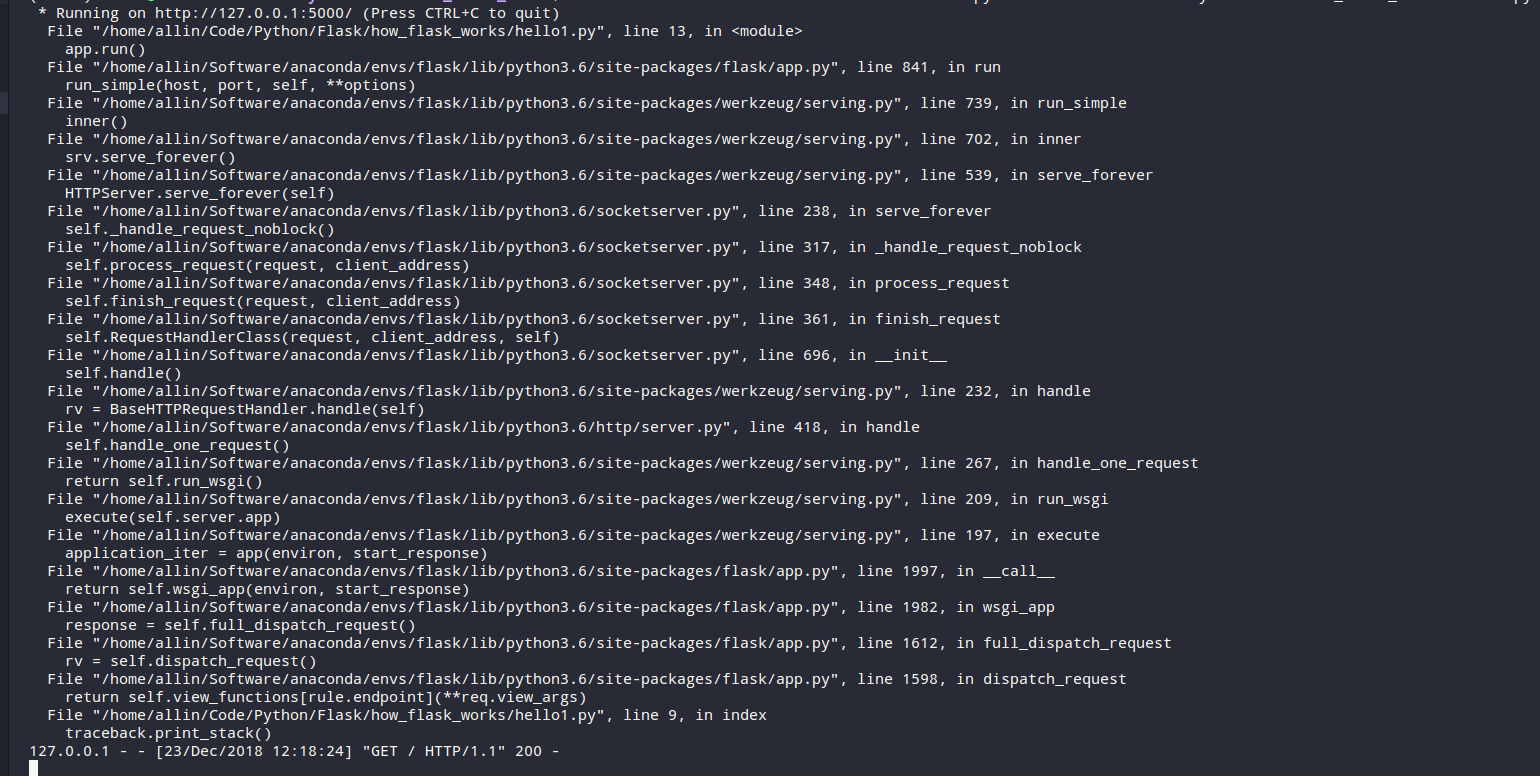解决方案
- pycallgraph(感觉直接用pycallgraph grahviz命令生成的图并不是我想要的)
- 如何去阅读并学习一些优秀的开源框架的源码? - mailto1587的回答 - 知乎
https://www.zhihu.com/question/26766601/answer/33952627
- traceback(没有图,直接在控制台打印)
解决方案2(用django来示范)
# django里的一个view
# views.py
class ArticleSearchView(View):
def get(self, request):
form = SearchForm(request.GET)
from .utils import cheese # 在这里插入
cheese() # 在这里插入
if form.is_valid():
keyword = form.cleaned_data.get("keyword")
if keyword:
article_list = Article.objects.filter(title__icontains=keyword)
return render(request, 'blog/search.html', {'form': form, 'article_list': article_list})
else:
form = SearchForm()
return render(request, 'blog/search.html', {'form': form, 'article_list': False, })
# utils.py
from __future__ import unicode_literals
def cheese(frame=None, slient=False):
import sys
import tempfile
import webbrowser
import pygraphviz as pgv
if not frame:
frame = sys._getframe().f_back
G = pgv.AGraph(strict=False, directed=True)
stack = []
node_set = set()
subgraph_set = {}
while frame:
filename = frame.f_code.co_filename
firstlineno = frame.f_code.co_firstlineno
function = frame.f_code.co_name
node = '{0}:{1}:{2}'.format(filename, firstlineno, function)
if node not in node_set:
node_set.add(node)
if filename not in subgraph_set:
subgraph_set[filename] = G.add_subgraph(
name='cluster' + filename,
label=filename
)
subgraph = subgraph_set[filename]
subgraph.add_node(
node,
label='{0}:{1}'.format(firstlineno, function)
)
stack.append(frame)
frame = frame.f_back
stack.reverse()
len_stack = len(stack)
for index, start in enumerate(stack):
if index + 1 < len_stack:
start_filename = start.f_code.co_filename
start_firstlineno = start.f_code.co_firstlineno
start_function = start.f_code.co_name
start_lineno = start.f_lineno
start_subgraph = subgraph_set[start_filename]
end = stack[index + 1]
end_filename = end.f_code.co_filename
end_firstlineno = end.f_code.co_firstlineno
end_function = end.f_code.co_name
end_subgraph = subgraph_set[end_filename]
if index == 0:
color = 'green'
elif index == len_stack - 2:
color = 'red'
else:
color = 'black'
G.add_edge(
'{0}:{1}:{2}'.format(start_filename,
start_firstlineno,
start_function),
'{0}:{1}:{2}'.format(end_filename,
end_firstlineno,
end_function),
color=color,
ltail=start_subgraph.name,
lhead=end_subgraph.name,
label='#{0} at {1}'.format(index + 1, start_lineno)
)
fd, name = tempfile.mkstemp('.png')
G.draw(name, prog='dot')
G.close()
if not slient:
webbrowser.open('file://' + name)
return name
解决方案2的结果图

解决方案3(用Flask来示范)
from flask import Flask
app = Flask(__name__)
@app.route('/')
def index():
import traceback
traceback.print_stack()
return 'Yet another hello!'
if __name__ == '__main__':
app.run()
解决方案3的结果图


